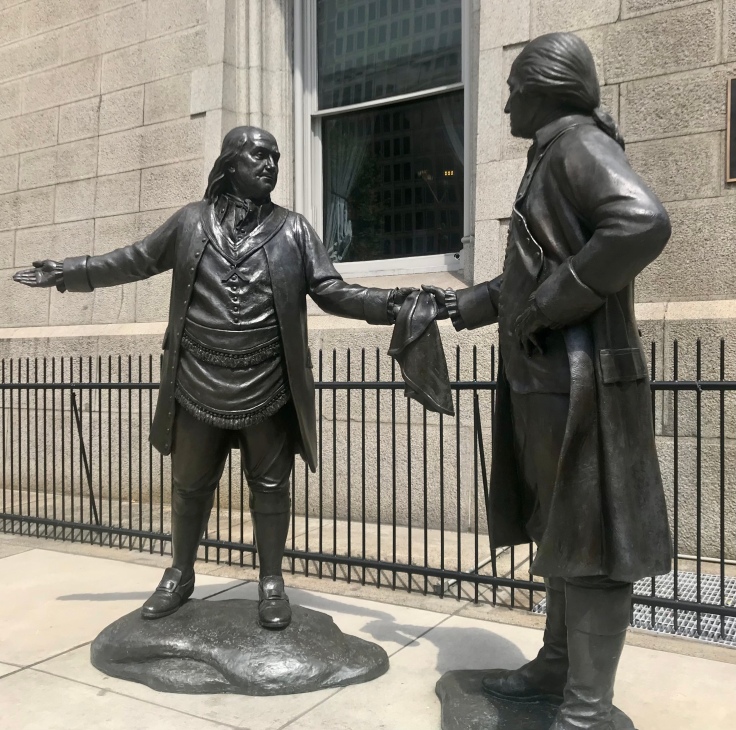
By: Donald L Swanson
Common Practice. A common practice in these United States is for commercial lawsuits to be mediated in a caucus-only format. That means:
- the parties never see each other during the mediation, except during the mediator’s opening comments and on visits to the toilet; and
- the mediator shuttles offers and rationale back-and-forth between the parties and is the exclusive means of communication between them.
Study Conclusion. Such common practice is directly-contrary to this: studies show that mediation is most effective and most popular when the disputing parties have face-to-face discussions with each other.
A Theory. Here’s a theory on why the common practice prevails, notwithstanding the studies’ conclusion:
- because that same common practice is for mediation to occur at the end of the litigation process and right before trial, when the parties are sick of each other and well familiar with all the arguments, discovery is mostly complete, and no one wants to see or talk to (let alone, spend time with) the opposition; and
- the study contexts involve mediation at an early stage.
Research Report
The “face-to-face is best” conclusion is from a September, 2010, Research Report published by the Health Professions Council of London, England, that’s titled, “Alternative Mechanisms for Resolving Disputes: A Literature Review.”[Fn. 1]
The Research Report reviews studies on mediation processes. Its goal is to provide information on the use of mediation for (i) addressing complaints against health and wellbeing professionals, and (ii) overcoming a lack of understanding thereon among members of the public and the professions.
Face-To-Face Discussions
According to the Research Report, face-to-face discussions between a professional and the complaining person allow for:
- the complainant to receive an explanation; and
- the professional to improve the quality of his/her practice, through hearing first-hand about the impact of prior actions.
–Highly valued
So, a face-to-face meeting between the people most affected by a problem is highly valued in the studies. The Scottish Legal Complaints Commission’s Mediation Manager says, for example: “when face to face with the person they wanted to ‘beat up’ they realise that this is just another person.”
–Clarity of understanding
Face-to-face meetings allow a “real time” interaction that increases odds for each party to understand all of the issues in the case. Until a face-to-face meeting is held, many parties simply do not understand the opponent’s arguments: clarity is, therefore, a key benefit of face-to-face mediation.
–Popularity
The Research Report also finds that in-person discussion is one of the most popular features of mediation for participants. To illustrate, a study of Canadian medical malpractice mediation says:
- “What pervaded disputants’ talk on mediation agendas was their wanting to directly discuss their perspectives, be heard, seen and understood”; and
- This view of direct discussion is shared by both plaintiffs and defending physicians.
Application
The Research Report says the United States has one the “most developed” mediation practices in the world.
Yet, my experience is that a common practice, within mediations of commercial lawsuits in the U.S., is directly-contrary to what studies show to be the best approach. Perhaps a re-assessment is needed of the entire litigation process in commercial lawsuits – and the use mediation therein.
Conclusion
Studies show that face-to-face discussions between the parties is not only the best way to mediate disputes, it’s also the most popular way to do so among disputing parties.
The commercial litigation/mediation process in these United States should take notice.
———————–
Footnote 1. The Research Report is prepared by Charlie Irvine, Rachel Robertson and Bryan Clark of the University of Strathclyde in Glasgow, Scotland.
** If you find this article of value, please feel free to share. If you’d like to discuss, let me know.
As a longtime mediator in Texas, I always afford the opposite parties to make face to face opening statements, to include oral statements by the non-lawyer principal party representatives, assuming the respective attorneys allow same, which I also encourage. If this results in any open dialogue exchanges, I referee that discussion to maintain productive order prior to breaking out each party for individual work sessions with me as the neutral. If I believe additional face to face sessions on particular points/issues to be productive, I re-convene additional joint session(s). A lot depends on the demeanor of the opposing party principals and their counsel. In this manner, as mediator , I can often become more of a “facilitator” toward incremental productive understandings between the parties.
When I have been a litigant, other mediators often take similar approaches that often “work”. I always assist my party principal in advance to be comfortable with exchanging his positions (within reason) directly with the opposing party principal. I find that periodically getting those two to speak directly to one another without the interference of the lawyers or mediators is refreshing, productive, and incrementally beneficial toward a settlement.
LikeLiked by 1 person
Thanks, RDO, for your insights!
LikeLike